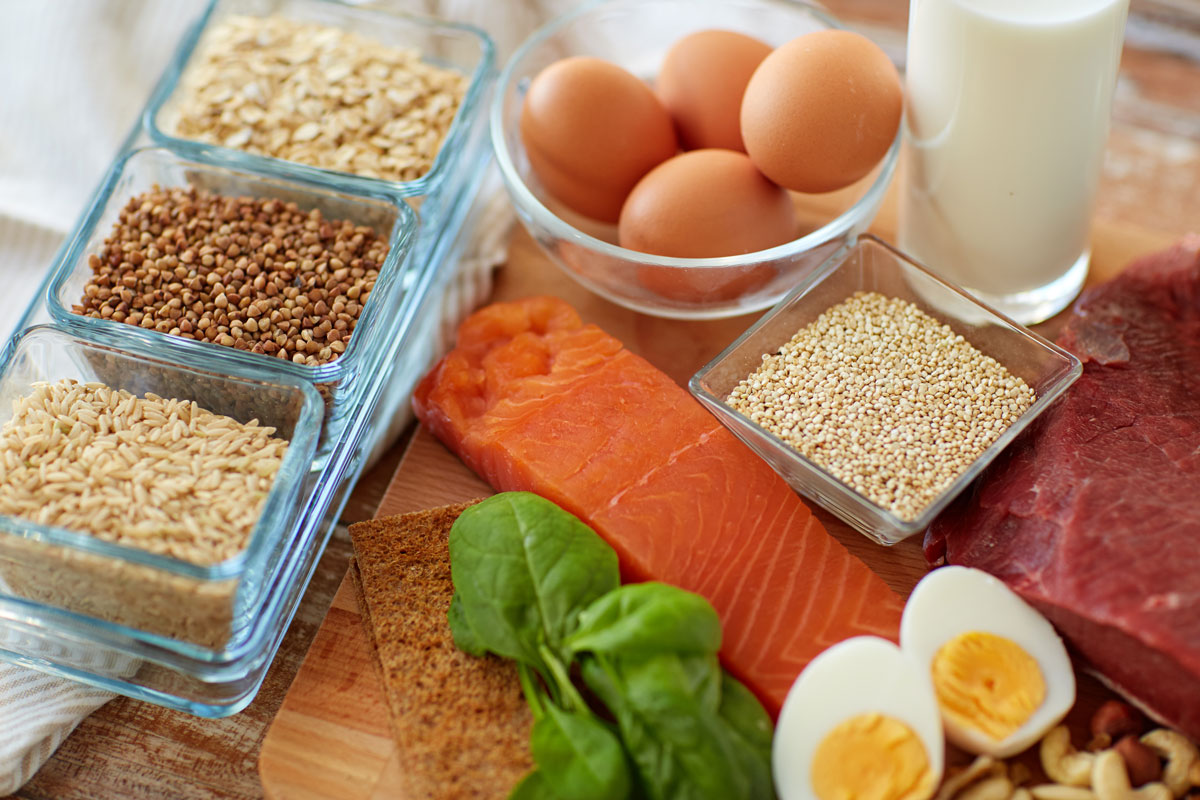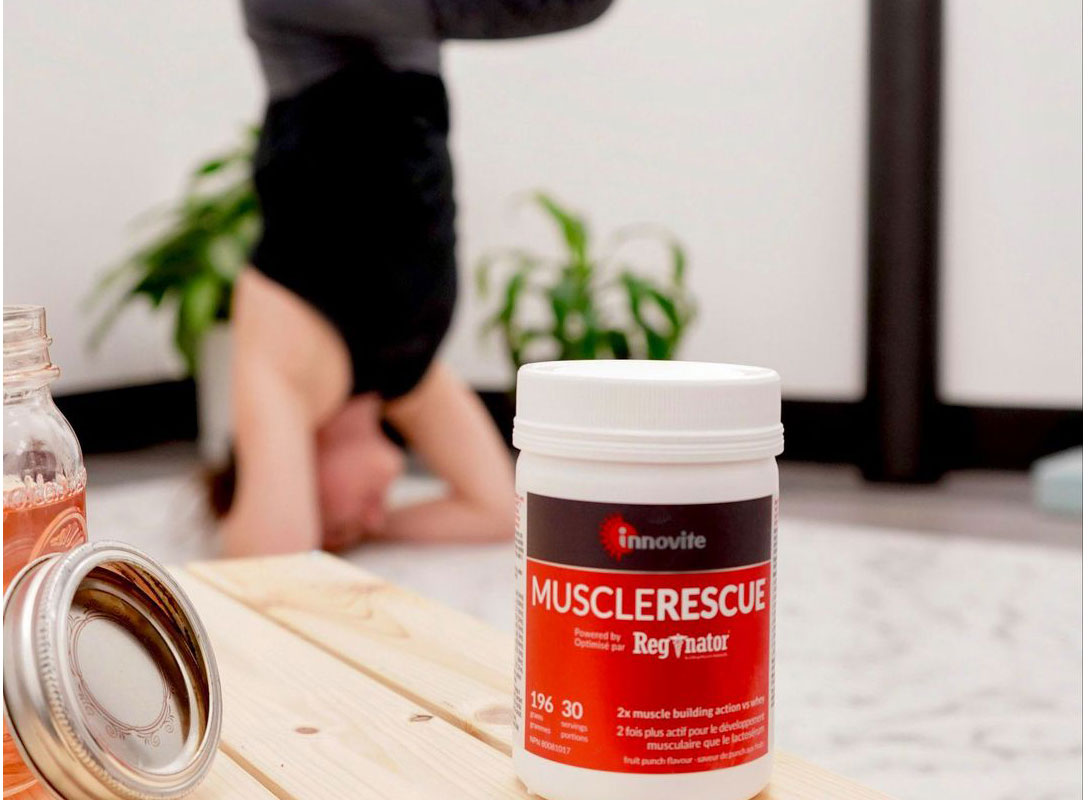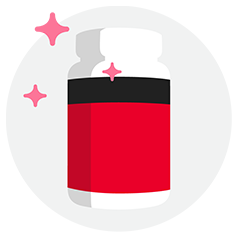How do amino acids help with muscle growth?

An apple a day may help keep the doctor away. But in reality, our bodies need much more than that to stay healthy and function properly! We also need macronutrients like protein (along with many other nutrients, vitamins, and minerals). Especially if you’re trying to build lean muscle mass.
While protein is involved in numerous functions within the body, it’s primarily known for its muscle mass-building capabilities. And when broken down into even smaller compounds, we get amino acids. These compounds are known to aid in tissue repair, support muscle growth and prevent muscle loss. So, if you’re looking to build more muscle, stick around to find out how amino acids can help you do just that.
Defining amino acids
Before we get into what amino acids are, let’s quickly talk about protein. Proteins have various responsibilities within the body. They can support cell repair, transport molecules throughout the body, and promote healthy growth and development, to name a few. Proteins can be obtained from foods (more on that below). And protein-rich foods are known for keeping us feeling full for longer periods of time.
Now, what are amino acids? To put it simply, they’re the building blocks of protein. Each protein is made up of several amino acids attached together, forming what’s known as a peptide bond. And when we digest protein, it gets broken down into individual amino acids that our bodies can use for various reactions.
There are 20 amino acids in total, but only 9 of these are said to be essential to our overall health. In the world of muscle growth, you may have heard the term complete protein. While it’s important to have a regular intake of protein in general, complete proteins have been shown to be more beneficial when it comes to building muscle. This is because these proteins contain all 9 essential amino acids.
Increasing your protein intake ultimately increases your intake of amino acids. So if you’re looking to increase muscle mass, you’ll want to focus on getting enough of those 9 essential amino acids.
Essential vs. non-essential amino acids
From aiding in protein synthesis to supporting nutrient absorption, essential amino acids are vital for numerous functions within the body. Studies have also shown that these amino acids can be helpful for wound healing, tissue repair, and supporting recovery after surgery. Additionally, taking essential amino acid supplements can help reduce muscle loss in older adults.
Although our bodies need essential amino acids to function properly, they can’t be produced within the body. This means we must turn to external sources, either through diet or supplementation. The 9 essential amino acids include:
- Leucine
- Isoleucine
- Lysine
- Phenylalanine
- Threonine
- Valine
- Tryptophan
- Histidine
- Methionine
Non-essential amino acids can be produced by our own bodies. The body does this by breaking down proteins and preexisting amino acids. They can also be obtained through our diet. While they are less necessary for our bodily functions, these amino acids still play an important role in our overall well-being by supporting immune function and energy production. The 11 non-essential amino acids include:
- Asparagine
- Glutamic acid
- Glutamine
- Glycine
- Alanine
- Cysteine
- Arginine
- Proline
- Tyrosine
- Serine
- Aspartic acid
What do amino acids do?
Let’s dive deeper into the health benefits of amino acids. By now, we know that amino acids play a role in growing and repairing body tissue, as well as building muscle.
But how exactly do they build muscle?
When we consume enough dietary protein, we have plenty of amino acids in our system. This means our body will experience a positive nitrogen balance, which is a measure of protein metabolism. This occurs when the amount of nitrogen going into your body is greater than the nitrogen going out, resulting in an increase in the total pool of protein within the body.
This positive loop then sends a signal, preparing the body for an anabolic or muscle-building state. As a result, amino acids help support this positive balance, ultimately helping to repair and grow new muscle fibres.
In addition, amino acids can:
- Prevent bone loss – Lysine increases the absorption of calcium, helping to treat and prevent bone loss.
- Help improve mental health – L-tyrosine can reverse dopamine depletion when the stress hormone, cortisol, is released. This can lower stress levels and improve physical performance.
- Use energy efficiently – L-arginine can regulate the body’s energy usage and has been shown to aid people with completing the same amount of exercise while using less energy.
How to increase your amino acid intake
If you’re looking to increase your intake of amino acids, the best way to load up on these multi-functional compounds is by eating more complete proteins. Some great sources of complete proteins include meat, poultry, fish eggs, dairy products, quinoa and chia seeds.
However, diet alone may not always be enough. If your goal is to build muscle and your body is in need of more amino acids, you can also turn to supplementation. Cue Innovite’s MuscleRescue, a vegan blend of essential amino acids. This formula is designed to have twice the muscle building action compared to whey protein and is clinically proven to reverse muscle loss without exercise.

Amino acids can support our health in a multitude of ways, including growing new muscle fibres, preventing muscle loss, and working to repair tissues. Making sure you’re consuming enough amino acids through your diet or supplementation can help you get closer to achieving your muscle-building goals.
Sources:






